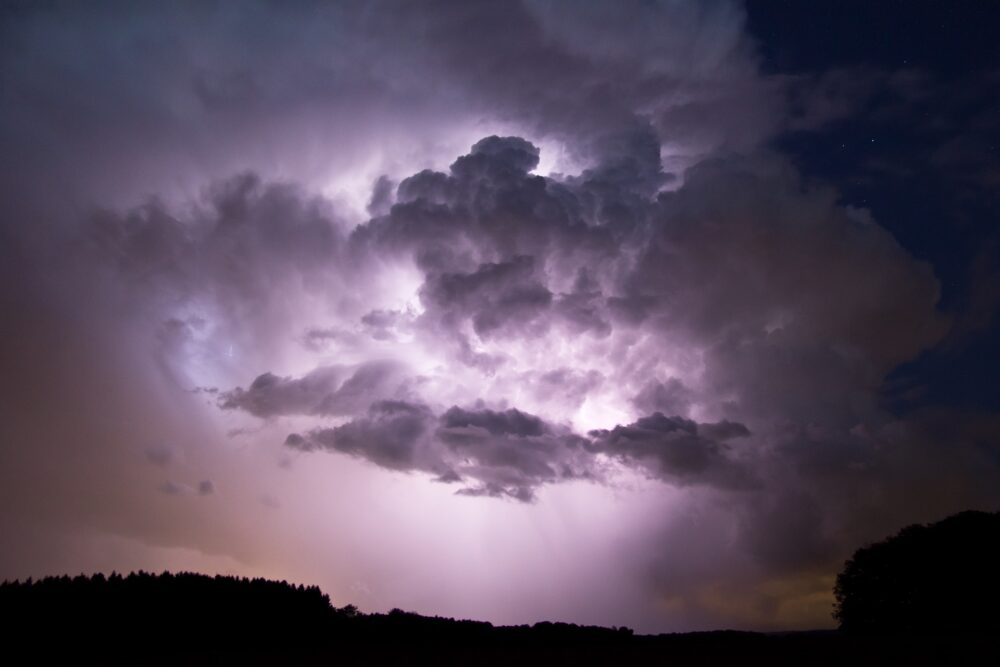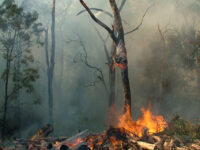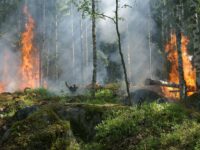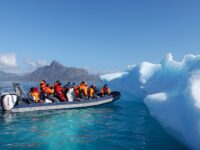Over the past few years, a new moral code including owning up to one’s mistakes and vowing to “do better” has swept mainstream American culture. Not only have people taken personal oaths to hold themselves to a higher standard, but they’re expecting more out of their neighbors, law enforcement, local elected officials, global leaders, and even celebrities.
It’s not surprising that accountability also plays a role in the modern environmental movement, arguably since 2015 when the United Nations published 17 Global Sustainable Development Goals to reach by 2030. Since then, millions have participated in climate strikes, and the 2020 Democratic presidential candidates drafted policies aimed at rectifying the effects of anthropogenic climate change. Both as a global community and nation, people are identifying who and what are at fault for the current frightening state of the natural world. Humanity has caused significant damage to the planet’s atmosphere, oceans, and animal species. In fact, scientists argue that humans have single-handedly caused Earth to enter a new geological epoch: the Anthropocene.
Humans have single-handedly caused Earth to enter a new geological epoch: the Anthropocene.
The Anthropocene’s earliest stage, they suggest, began with the arrival of agriculture, domestication of animals, and wide-ranging deforestation. However, geologists claim the official beginning of the epoch was not until the “Great Acceleration” of the mid-20th century, when the rate of world population growth was at its peak and industrialization was on the rise. The Anthropocene epoch is distinct from the previous geological epoch, the Holocene, because of higher global temperatures and sea level; production and dispersion of new materials like concrete and plastics; harmful levels of certain chemicals in the atmosphere, ocean, and soil; and rapid species extinction and displacement.
The rise in global temperature is largely due to the greenhouse effect: the accumulation of gases such as carbon dioxide, methane, nitrous oxide, and synthetic chlorofluorocarbons (CFCs) that all act to trap heat by absorbing long-wavelength infrared light being reflected by the Earth. The greatest producer of excess carbon dioxide is, of course, the burning of fossil fuels. Using up a gallon of gas in one’s car adds 20 pounds of carbon dioxide to the air. To an extent, the planet can be very helpful in removing some of this carbon dioxide. Oceans can dissolve it, and plants use it in the process of photosynthesis — remarkably, a tree weighing two tons consumes seven tons of carbon dioxide in its lifetime. Unfortunately, exploitative deforestation and industrial agriculture strip such large tracts of land at a time and so quickly that it is simply impossible for forests to grow back at the same rate as they are being depleted.
Furthermore, global warming leads to more violent weather by changing air and ocean currents and causing a rise in sea levels. It also causes climate zones to move away from the equator and toward the poles, and the equatorial tropic region to shrink. This has drastic effects on the order of the natural world, and, in turn, on human well-being and survival. All species, from animals to plants to disease-carrying bacteria, must either go extinct or adapt to a new man-made environment — putting agriculture, food and water security, public health, and economies in grave trouble.
All species, from animals to plants to disease-carrying bacteria, must either go extinct or adapt to a new man-made environment — putting agriculture, food and water security, public health, and economies in grave trouble.
One greenhouse gas, CFCs, not only traps heat, but also eats away at the ozone layer: the Earth’s natural shield for lethal ultraviolet-C rays. CFCs are most often used in refrigeration, air conditioning, spray cans, and making foam plastic. On the surface of ice crystals in the stratosphere, CFC molecules are broken up by ultraviolet radiation to release a form of chlorine that destroys ozone gas. A single molecule of CFC lasts for nearly a century and destroys about 100,000 molecules of ozone. Each winter, the Antarctic vortex seals off the southern pole from warmer surrounding air, enabling more ice crystals to form and more ozone to be depleted until temperatures warm again. All that is needed to patch up ozone holes are free oxygen and the sun’s rays, but climate change can make this process unpredictable from year to year by altering the amount of ice crystals that form at the South Pole. Moreover, if CFCs continue to run rampant in the stratosphere, ultraviolet-C rays can reach the surface and cause painful burns and even cancer before the ozone hole manages to close back up with warmer weather.
Other dangerous pollutants frequently released into our shared airspace are large quantities of sulfur and nitrogen (causing acid rain), carbon monoxide, ozone gas, toxic chemicals from factory and vehicle exhaust, and radioactive particles. (On the surface of the planet, ozone is extremely reactive and burns living tissue.)
Oceans and other bodies of water are being massively polluted as well. Acid rain and industrial waste kill whatever marine life they touch, while sewage and fertilizer runoff (containing phosphates and nitrogen, respectively) promote algal blooms and anoxia, which suffocate fish.
It’s natural for some species to die out every now and then, but the current extinction rate is tens or even hundreds of times as great as what the average rate has been for the past 10 million years.
Pollution, habitat destruction, overhunting, overfishing, climate change, and the introduction of invasive species are causing what some deem the sixth mass extinction. For some perspective on what it takes for a period to qualify as a mass extinction, the most recent one wiped out the dinosaurs 66 million years ago. A report released in May 2019 by the Intergovernmental Science-Policy Platform on Biodiversity and Ecosystem Services announced that around 1 million species, or 12.5 percent of all world species, are currently at risk of extinction. It’s natural for some species to die out every now and then, but the current extinction rate is tens or even hundreds of times as great as what the average rate has been for the past 10 million years.
Even though the planet has some natural defense mechanisms in place — such as ridding the atmosphere of excess carbon dioxide, fixing ozone holes, and allowing life to endure through adaptation — it’s hard to believe these protective measures have a chance against the speed and magnitude of our damage.
Basically, we are making the world less habitable for ourselves. Through pollution, mankind has caused climate change, which increases violent weather events and thus natural disasters. This hurts people both directly, by killing them, and indirectly, by disrupting economies. Additionally, climate change may improve conditions for infectious diseases to spread through animal vectors to humans. And, of course, people are disrupting natural ecosystems and polluting food and water supplies. On top of this, man-made health issues such as cancers and cardiovascular problems are on the rise in part because of pollution, less active lifestyles, and unhealthy diets.
Even though the planet has some natural defense mechanisms in place… it’s hard to believe these protective measures have a chance against the speed and magnitude of our damage.
An optimistic view would be that the Earth has natural systems in place to reverse some of our damage. In a paper that is now close to 50 years old, using data that has aged just as much, two scientists formalized this idea with the “Gaia hypothesis.” In 1973, James Lovelock and Lynn Margulis published the paper, “Atmospheric homeostasis by and for the biosphere: The Gaia hypothesis,” in which they define “Gaia” as Earth’s entire biosphere — that is, all forms of life residing on the planet. The idea is that all living things regulate each other in such a way as to ensure each other’s survival. Lovelock and Margulis believed Gaia could regulate the chemical compositions of the atmosphere, ocean, and soil; the surface temperature; and the pH of the oceans and land. It’s true that in 1973, when the paper was published, these factors had remained largely stable. But since then, all of them have, in fact, fluctuated — largely due to human actions.
Taking into account what has changed in the past half-century, climate scientist Timothy Lenton and anthropologist and sociologist Bruno Latour published a paper in 2018 arguing that Gaia gives humanity too passive of a role in maintaining the order of the natural world. Rather, they advocate for taking lessons from Gaia’s foundational principle — that all species rely on one another — to create a new framework by which we can restore the damage we’ve done. They call this framework Gaia 2.0, and in it they explain that we need to engineer more closed-material systems in which we use sustainable energy to power turning waste materials into useful products, among other strategies. Lenton and Latour also underscore the importance of designing better sensors to measure climate change and better models to effectively present climate data so that regular people, activists, and politicians can begin to enact real change on the environmental front. By building off an originally idealistic hypothesis to create realistic strategies and goals, perhaps this framework has the potential to do some real good and finally stop humanity’s reign of terror on Earth.
Tellus (1973). DOI: 10.3402/tellusa.v26i1–2.9731
Science (2016). DOI: 10.1126/science.aad2622
Science (2018). DOI: 10.1126/science.aau0427
Image source: Pixabay.






